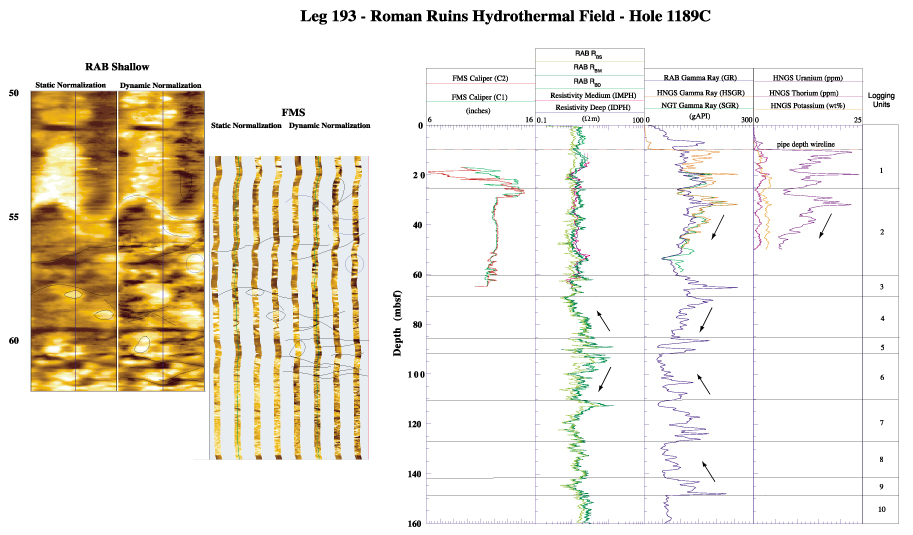
A comparison between logging while drilling (LWD) resistivity at the bit (RAB) and wireline log data in the first ODP deployment of the RAB tool. The LWD data (images, deep-, medium-, and shallow-button resistivity curves, and gamma ray profile) show fracture patterns, alteration trends (denoted by arrows), and high gamma ray values that may be indicative of hydrothermal fluid flow along fractures causing high uranium concentrations. The wireline logging data was only collected in the upper 65 m because of a hole obstruction, emphasizing the value of LWD data before deterioration of borehole conditions. The FMS calipers show the size of the borehole in the upper sections after LWD operations were finalized. The wireline spectral gamma ray data show the correlation between high gamma ray values (RAB and wireline) and high uranium concentrations (wireline). The RAB data also show a rapid increase in gamma ray values from seafloor to ~6 mbsf that are not present in the wireline logs (because of the location of the drill pipe at 10 mbsf) nor in core data and may correspond to the presence of friable chimney material. Fracture patterns correlate well between the full 360º coverage RAB and the higher resolution (< 20% borehole coverage) FMS oriented images. In addition, because of relatively poor core recovery, the LWD logs provide the only continuous records of the lithostratigraphic sequences drilled in the Manus Basin.
